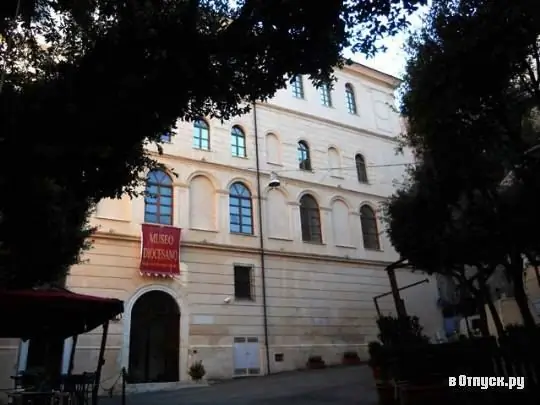
Description of the attraction
The Diocesan Museum of Gaeta is located in the historic building of Palazzo De Vio, which belonged to the local native, Cardinal Tommaso De Vio. Over the past several centuries, the Palazzo has been rebuilt several times, which completely changed its original appearance.
For the first time, the idea of creating a Diocesan Museum arose in 1903 on the occasion of the beginning of the construction of a new facade of the Cathedral of Gaeta, dedicated to Saint Erasmus and the Assumption of the Virgin. At the same time, the beginning of a collection of medieval and later religious objects was laid. In subsequent years, paintings from the central nave of the cathedral, which have survived from the 13th century, were added to the collection. The collected exhibits became the nucleus for the creation of an impressive art collection and a small archaeological museum. Among the exhibits were drawings of religious buildings destroyed during the Second World War, destroyed and secularized churches.
In the 1950s, the final decision was made to create the Diocesan Museum, which was inaugurated in the covered gallery of the Cathedral in 1956. And in 1998, the museum's collections were moved to the specially restored Palazzo De Vio.
Today in the Diocesan Museum you can see paintings on canvas and wood, from the 13th century until the second half of the 19th century. All works, most of which are devoted to religious themes, are exhibits from the old museum, cathedral and other churches, now closed for worship. From the paintings presented here, one can trace the history of the development of the artistic thought of the Campania over several centuries. In general, this collection is the largest in the southern part of the Italian region of Lazio, to which Gaeta belongs today.
A huge number of paintings in the museum belong to the local artist Giovanni Gaeta, who worked in the second half of the 15th century. Other masters include the artists Scipion Pulzone, Sebastiano Conca, Riccardo Quartararo, Teodoro d'Errico, known as the Dutchman, Girolamo Imparato, Fabrizio Santafeda and others.
In the private living room of the Palazzo De Vio, you can see two Byzantine crosses, a tabernacle and a cup of Pope Pius IX from the mid-19th century. Also in the halls of the gallery are exhibited choirs from 1569-70s by Vincenzo Ponta.






